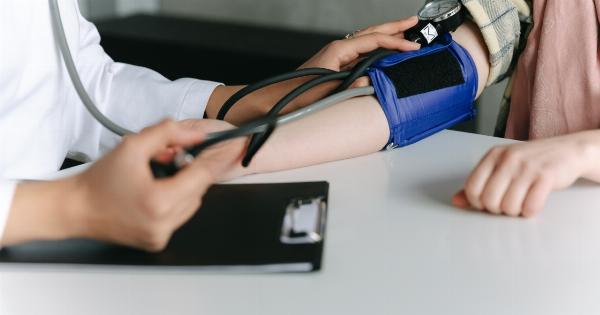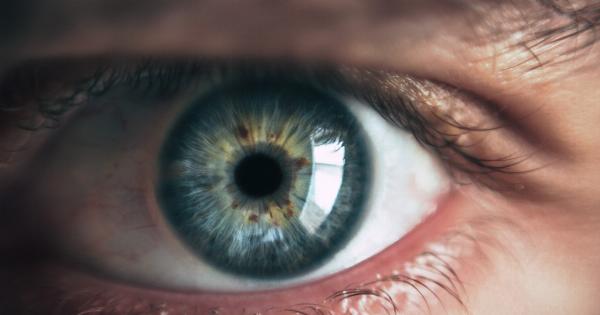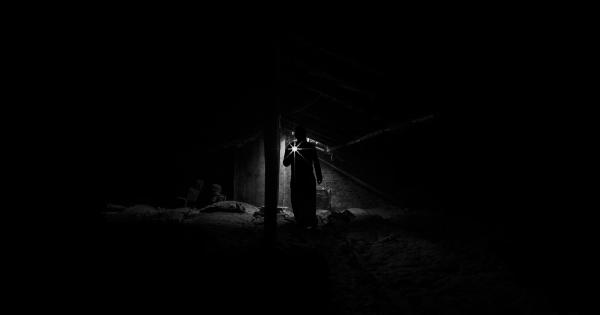High blood pressure, also known as hypertension, is a common health condition that affects millions of people worldwide.
It is a chronic condition that can lead to serious health complications if left untreated, including heart disease, stroke, and kidney failure.
One of the lesser-known warning signs of high blood pressure is changes in your eyes. The eyes are a window to your overall health, and there are certain changes that can occur that may indicate that you have high blood pressure.
In this article, we will discuss the warning signs of high blood pressure in your eyes and what you can do if you notice these changes.
1. Retinal Changes
The retina is the part of the eye that sends visual signals to the brain. High blood pressure can cause changes to the retina that can be detected during an eye exam. These changes include:.
- Arteriolar constriction – When the small blood vessels in the retina narrow, it can be a sign of high blood pressure
- Retinal hemorrhages – Bleeding in the small blood vessels of the retina can be caused by high blood pressure
- Cotton wool spots – These are fluffy white patches that can be seen on the retina and can indicate damage from high blood pressure
- Optic nerve swelling – High blood pressure can cause swelling of the optic nerve, which can be detected during an eye exam
2. Eye Blood Vessels
High blood pressure can also affect the blood vessels in the eye itself. It can cause them to narrow, leak or even burst which can lead to serious problems with your vision, including:.
- Blurry vision – When the blood vessels in the retina become damaged, it can cause blurry vision
- Double vision – High blood pressure can cause damage to the nerves that control your eye muscles, which can lead to double vision
- Visual changes – Other visual changes such as spots, floaters, or even temporary vision loss can be caused by high blood pressure
3. Papilledema
Papilledema is a condition that occurs when there is swelling of the optic disc due to increased pressure in the skull. This increased pressure can be caused by high blood pressure, and it can cause a variety of symptoms such as:.
- Headaches
- Nausea and vomiting
- Blurry vision
- Visual changes
- Flashing lights or halos around lights
4. Hypertensive Retinopathy
Hypertensive retinopathy is a common eye condition that is caused by high blood pressure. It occurs when the small blood vessels in the retina become damaged due to the force of the blood pushing against them.
This damage can cause a variety of symptoms such as:.
- Blurry vision
- Double vision
- Eye pain
- Visual changes
5. Optic Neuropathy
Optic neuropathy is a condition that occurs when the optic nerve becomes damaged. This can be caused by high blood pressure, and it can cause a variety of symptoms such as:.
- Blind spots in your vision
- Loss of peripheral vision
- Color vision changes
What to Do If You Experience These Symptoms
If you are experiencing any of these symptoms, you should schedule an appointment with your eye doctor as soon as possible. They will be able to perform an eye exam and determine if there is any damage to your eyes that is caused by high blood pressure.
If the damage is severe, they may refer you to a specialist for further treatment.
If you have high blood pressure, you should talk to your doctor about how to manage your condition.
This may include making lifestyle changes such as exercising more, eating a healthy diet, and quitting smoking, as well as taking medication to help lower your blood pressure.
Conclusion
High blood pressure can cause a variety of changes in your eyes, including damage to the retina, the blood vessels in the eye, and the optic nerve.
If you are experiencing any of these symptoms, you should schedule an appointment with your eye doctor as soon as possible. It’s also important to talk to your doctor about managing your blood pressure to help prevent further damage.





























